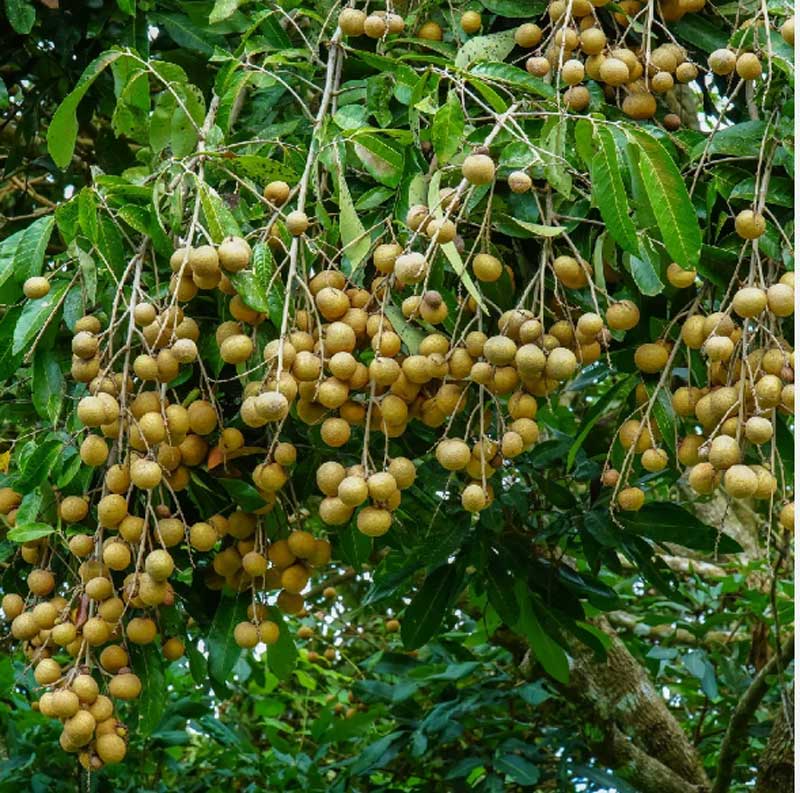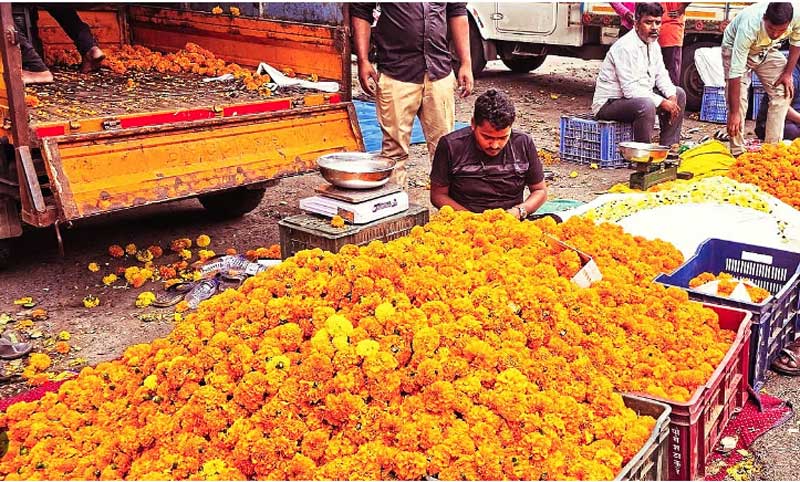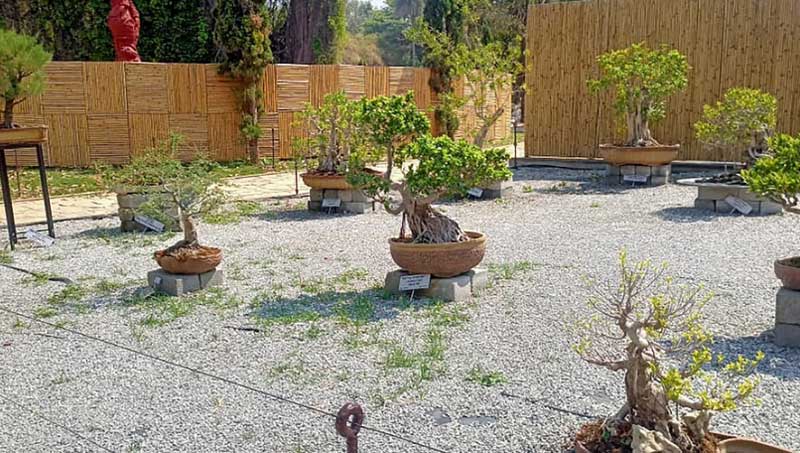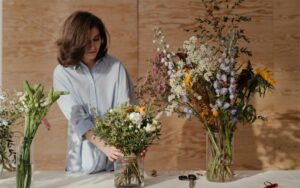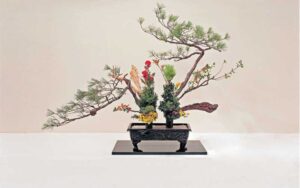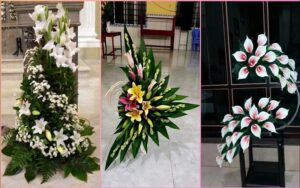Flower carpets and Floral rangoli : Astounding Floral adornment to the floor
Devarai Lava Kumar
M. K. Singh
Namita, Sapna Panwar
(ICAR-IARI, New Delhi )
Floral art is a creative form of expression that involves arranging and designing flowers and other plant materials to create aesthetically pleasing compositions. Indian culture has a deep and ancient association with flowers that spans thousands of years. Flowers have played significant roles in various aspects of Indian life, spirituality, and art. Floral art can take various forms, including flower arrangements, bouquets, wreaths, and even large-scale installations. It often combines principles of design such as color, balance, contrast, and harmony to create visually striking and emotionally evocative displays.
Now a days people are fascinated to improvise the aesthetic sense in various contexts, including weddings, funerals, celebrations, and home décor. Professional florists and floral designers are skilled practitioners of floral art, but it’s also a popular hobby for many enthusiasts who enjoy arranging flowers as a form of relaxation and self-expression. Floral art can convey various emotions and meanings, with different flowers and arrangements symbolizing sentiments like love, sympathy, celebration, and gratitude. Floral art continues to evolve with new trends and styles, making it a vibrant and ever-changing aspect of both art and Floriculture. In recent years, there has been a growing trend toward sustainable and eco-friendly floral art, emphasizing locally sourced and seasonal flowers to reduce environmental impact. Flower carpets and floral rangoli are easily fixed in by satisfying the above demands.

A flower carpet is a design made on the ground with flowers in various patterns and floral rangolis are the designs made with flower petals, that are arranged in patterns. The art of floral rangoli is not limited to fresh flower petals; but it can also involve whole flowers, dried or artificial flowers and other natural elements like branches, leaves, and grasses.
Designing a Floral carpet:
A floral carpet starts with the planning the design, size of the art and available flowers. First a plan is laid on the paper and next it is established on the chosen site. Lawns remain as the perfect ideal canvas for creating vibrant floral carpets. After the selection of suitable site of arrangement, the outline can be marked with the help of threads and lime or chalk powder.
Then the selected flowers are arranged with the help of nails by pressing into the lawn. Individual flower is anchored with single nail. These flower carpets remain as the special attractions of the flower shows or any other social functions. The whole flowers are used here mostly without cutting the petals separately. Various flowers can be used in these flower carpets, especially, the marigolds, chrysanthemums and China Asters. Sometimes, the full flush bloomed small potted pots were also used in the arrangements of the floral carpets and foliage pots like alternanthera, ornamental kale also helps as the additional support in improvising the colour combinations.

Floral rangoli with vibrant flower patterns
Rangoli is an art form originating in India and is often used to decorate the entrances of homes and public spaces during festivals and special occasions. Recent times no function is complete without the floral rangoli. Floral rangoli is twined with many religious functions including Diwali, Dasara, Varalaxmi pooja, House warming ceremony, Ganesh pooja, Marriages, Janmashtami, Onam, Flower shows, mela etc.
Basic considerations while doing floral rangoli:
Select a plain surface
Use fresh flowers
Use of scissors to cut the white flowers
Use Knife to cut yellow, orange and rose colour flowers
Draw a perfect design with suitable white chalk or pencil
Use scale or ice-cream sticks for arranging flower thickness
Use dark and bright or other perfect combinations
Various flowers chosen based on the colours available as listed below:
Red: Rose, Ixora, Hibiscus, Chrysanthemums, Bougainvillea, Salvia, Pentas, Balsam, young teak leaves (cut into small pieces).
Maroon: Gaillardia, French Marigold, Zinnia, Dahlia
Pink: Rose, Zinnia, Balsam, Celosia, Nerium and Acalypha flowers.
Light pink: Nerium, Periwinkles, lotus, roses
Orange: Marigold, Calendula, Zinnia, Cosmos, Tithonia, Gaillardia and Crossandra
Yellow: Marigold, Gaillardia, Chrysanthemum, tecoma, calendula, coreopsis
Violet: China Aster, Barleria, Balsam
Purple: Gomphrena
White: Chrysanthemum, Jasmines, Tuberose
Green: Alternanthera, Thuja, Asparagus, Gulmohar leaves, grinded mango leaf powder
Black: Grinded mango leaves mixed with ash.
Creating a floral art i.e., rangoli or carpets, reflects our culture in a beautiful and meaningful way to celebrate traditional art and customs. Remember that a floral art to the floor is not only a visual feast but also a way to connect with our cultural roots and share our heritage with others. Floral arts are ultimately a form of art that combines spirituality, creativity, and tradition, and it can serve as a powerful expression of your religious beliefs. A beautiful representation of incorporating culture’s art, symbolism, and traditions.

